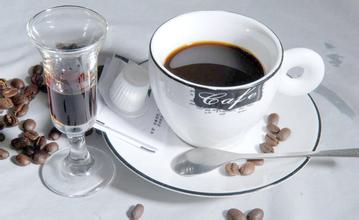Flavor description of Brazilian Minas sun-dried bourbon coffee beans introduction to the characteristics of varieties and taste
Introduction of Brazilian Coffee beans
Coffee was first introduced to Brazil in the early 18th century. In 1727, the Brazilian government sent a personable army officer to secretly bring coffee seeds from French Gaiana to Brazil on the pretext of mediating border disputes. It is said that the governor's wife of French Gayana was so fascinated by the officer that she secretly brought coffee tree seeds to him at a farewell dinner party. At present, 2 million hectares of land in Brazil is used to grow coffee, with the largest being Arabica. The beans will eventually be sent to the big bakers in various countries, known as Santos (in the name of the port of export, santos, not the producing area).
Brazilian boutique coffee
Brazil has also proved to be able to produce gourmet coffee and small quantities of coffee, and the local boutique coffee can not only be provided by small-scale coffee farmers. The main coffee producing areas in Brazil are Sulde Minas South Minas, Matas de Minas Minas South East Mountain Forest, Cerrado Hirado, the north-central mausoleum of Chapadas de Minas Minas, Mogiana, Paran á Parana and Bahia Bachia. There are both traditional varieties and variants, such as Bourbon, Mondo Novo Mondonovo, Icat ú Ikatu, Kaduai, Iapar, cultivated card Taiyi.
[boutique listing] Yellow bourbon sun treatment of Queen Mongiana Manor in Brazil
Brazil Rainha Yellow Bourbon Natural
Producing area: Alta Mogiana region, S ã o Paulo
Estate: Fazenda Rainha Manor (Queen Farm)
Variety: yellow bourbon (Yellow Bourbon)
Altitude: average 1150 ft 1350 m
Treatment: natural sun drying
Flavor features: balanced sweet, creamy smooth, orange, apricot and other fruit flavor, chocolate, caramel flavor

Important Notice :
前街咖啡 FrontStreet Coffee has moved to new addredd:
FrontStreet Coffee Address: 315,Donghua East Road,GuangZhou
Tel:020 38364473
- Prev

General characteristics of coffee beans in Kenya introduction to the taste of graded coffee flavor description treatment
The Kenyan coffee bean flavor description method introduces that the Kenyan government takes the coffee industry very seriously, where it is illegal to cut down or destroy coffee trees. Kenyan coffee buyers are world-class high-quality coffee buyers, and no other country can grow, produce and sell coffee on a continuous basis like Kenya. All coffee beans are first made by the Kenya Coffee Commission (CoffeeB)
- Next

Introduction to the quality and taste of jasmine-flavored Guatemalan coffee flavor description
Coffee-flavored coffee was really introduced into Guatemala in 1750 by Father Jesuit, and the coffee industry was developed by German colonists at the end of the 19th century. Today, most of the coffee industry's production takes place in the south of the country. There are seven major coffee producing areas in Guatemala, and the flavor of coffee produced in each region is different, but to sum up, Guatemala
Related
- Detailed explanation of Jadeite planting Land in Panamanian Jadeite Manor introduction to the grading system of Jadeite competitive bidding, Red bid, Green bid and Rose Summer
- Story of Coffee planting in Brenka region of Costa Rica Stonehenge Manor anaerobic heavy honey treatment of flavor mouth
- What's on the barrel of Blue Mountain Coffee beans?
- Can American coffee also pull flowers? How to use hot American style to pull out a good-looking pattern?
- Can you make a cold extract with coffee beans? What is the right proportion for cold-extracted coffee formula?
- Indonesian PWN Gold Mandrine Coffee Origin Features Flavor How to Chong? Mandolin coffee is American.
- A brief introduction to the flavor characteristics of Brazilian yellow bourbon coffee beans
- What is the effect of different water quality on the flavor of cold-extracted coffee? What kind of water is best for brewing coffee?
- Why do you think of Rose Summer whenever you mention Panamanian coffee?
- Introduction to the characteristics of authentic blue mountain coffee bean producing areas? What is the CIB Coffee Authority in Jamaica?

